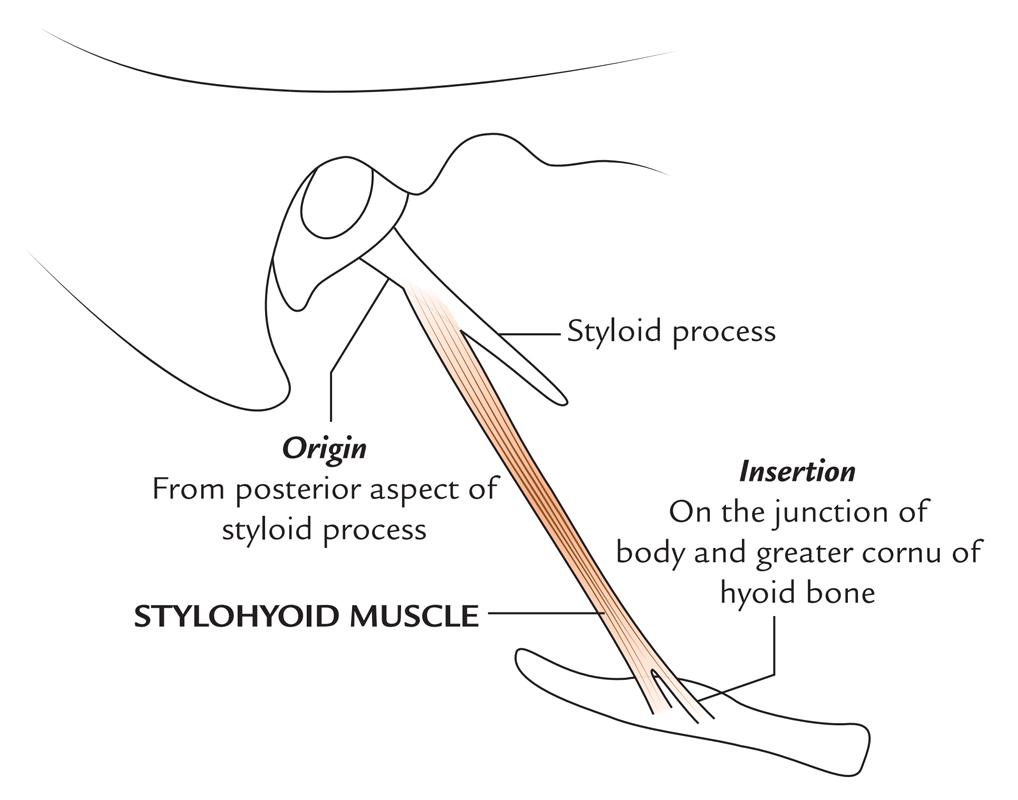The stylohyoid muscle is among the suprahyoid group of muscles of the neck. It is a slender muscle which is located alongside the upper boundary of the posterior belly of the digastric muscle. Its inferior end splits and enables the passage of the digastric tendon. At the time of swallowing stylohyoid pulls the hyoid bone towards the backside.

Origin and Insertion of Stylohyoid Muscle
Origin
Stylohyoid muscle arises via the posterior side of the styloid process.
Insertion
It is attached at the junction in the middle of the body as well as greater cornu within the hyoid bone. Its tendon divides into two strips which travel one on both sides of the intermediate tendon of the digastric muscle on the attachment. The stylohyoid muscle is considered as the delaminated portion of the posterior belly of the digastric muscle.
Nerve supply
The stylohyoid muscle is supplied by the facial nerve due to its development via the 2nd arch.
Actions
- It pulls the hyoid bone upwards as well as backwards.
- Elongates the floor of the mouth.
Relations
- Digastric or submandibular triangle is posteroinferiorly confined with posterior belly of digastric muscle and enhanced by stylohyoid muscle.
- Facial artery arises from the front aspect of external carotid artery just superior to the lingual artery and travels upwards on the superior constrictor deep towards digastric and stylohyoid muscles.
- First muscular plane of the submandibular region created via the digastric and stylohyoid muscles.
- The tendon of digastric muscle travels in the middle of the two strips of the tendon of the stylohyoid muscle.
- Upper margin of the posterior belly of the digastric muscle is connected to the stylohyoid muscle.
- Posterior auricular artery traverses superficially towards the stylohyoid muscle.
- Branch towards the posterior belly of digastric which is a branch of facial nerve also gives a branch to the stylohyoid muscle.
Clinical Significance
Myofascial pain syndrome a.k.a. chronic myofascial pain is a syndrome described via chronic pain in several myofascial trigger points and fascial or connective tissue contractions. It can usually arise in any portion of the body.
Characteristic features of a myofascial trigger point include:
- Focal point tenderness
- Reproduction of pain upon trigger point palpation
- Hardening of the muscle upon trigger point palpation
- Partial-weakness of the involved muscle
- Referred pain

 (60 votes, average: 4.61 out of 5)
(60 votes, average: 4.61 out of 5)